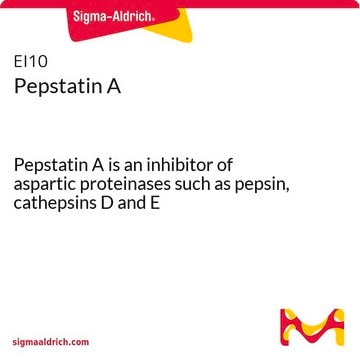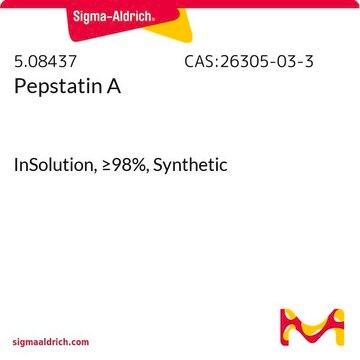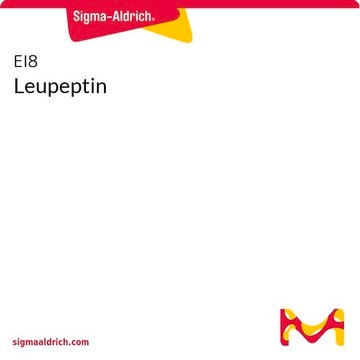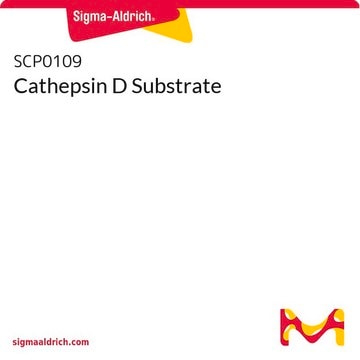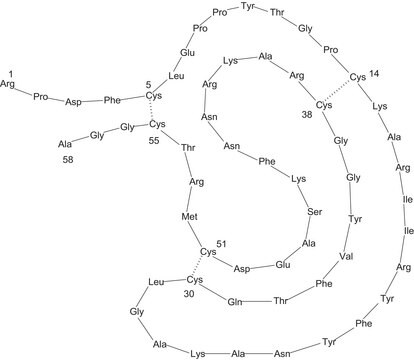Pepstatin A can be stored at -20°C following reconstitution/dissolution and is soluble in ethanol at 1mg/mL. It is also soluble in DMSO, ethanol, or glacial acetic acid (9:1) at 1mg/ml. For dilution, an aqueous buffer at slightly alkaline pH is recommended when using the above organic solvents. However, it is insoluble in dH2O and other aqueous buffers at near neutral pH, and may precipitate from the solution if water or acidic buffer is used for dilution. Solutions of Pepstatin A can be heated as high as 60°C without decomposing the peptide.
Regarding preparation, Pepstatin A is only sparingly soluble in water, and its solubility is related to the purity of the preparation. Stock solutions at 1mg/mL should be stable for at least a week at 4°C, while a 1mM solution in methanol should be stable for months at –20°C. Any yellowing of the solution indicates hydrolysis. An effective working concentration is 1uM, stable for at least one day at room temperature, with a typical working concentration being 0.5-1ug/ml.
In terms of stability and solubility, some solutions can be difficult to obtain and can be encouraged by rapid stirring, sonication, or gentle warming (in a 45-60°C water bath). Peptides in solution are less stable than in lyophilized form, especially if they contain certain amino acids. It's recommended to store peptides in solution for as short a time as possible, avoid repeated freeze-thaw cycles, and discard any portion of an aliquot unused after thawing. Additionally, peptides stored in solution can be susceptible to bacterial degradation, so sterile solutions or passing the peptide solution through a 0.2 μm filter to remove potential bacterial contamination are advised whenever possible.



